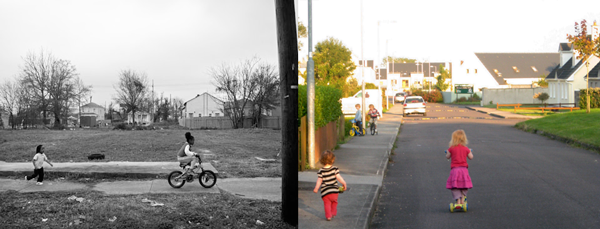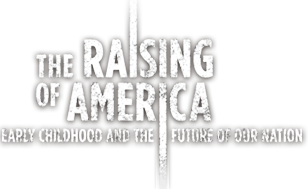DISCOVER
Zip code or genetic code?

The health and well-being of people vary markedly from neighborhood to neighborhood. Residents of some poor, segregated neighborhoods of Baltimore, for example, can expect to die 15 years earlier on average than people in neighborhoods less than five miles away. Similar differences can be seen in educational outcomes, mental health and substance abuse, crime, teenage pregnancy, obesity—almost any indicator you can imagine.
Social scientists have long debated whether a neighborhood produces success or failure or whether people who succeed or fail simply live in certain neighborhoods. A series of recent studies (click to see) make a powerful and compelling case that the assets and opportunity structures of neighborhoods do matter, especially with respect to children’s long-term chances.
Recent Studies
-
The Impacts of Neighborhoods on Intergenerational Mobility
by Raj Chetty and Nathaniel Hendren -
The Effects of Exposure to Better Neighborhoods on Children
by Raj Chetty, Nathaniel Hendren and Lawrence Katz -
Children and Housing Vouchers
by Barbara Sard and Philip Tegeler - Great American City: Chicago and the Enduring Neighborhood Effect by Robert Sampson
- Stuck in Place: Urban Neighborhoods and the End of Progress toward Racial Equality by Patrick Sharkey
-
Housing Policy Is School Policy
by Heather Schwartz -
Let’s leverage growth to build inclusive neighborhoods in cities and suburbs alike
by Rolf Pendall of Urban Wire -
Targeting Housing Mobility Vouchers to Help Families With Children
by Craig Pollack, Rachel Johnson Thornton and Stefanie DeLuca
One well-studied program illustrates the case. HUD's Moving to Opportunity (MTO) program used rent subsidies to help poor families move from neighborhoods of concentrated poverty to more affluent neighborhoods in order to see if that change would improve their economic and health outcomes.
In a study by Raj Chetty, Nathanial Hendren and Lawrence Katz, they found that children under 13 who moved to wealthier neighborhoods were more likely to attend college, had better health, had fewer teenage pregnancies, and earned nearly $3,500 more each year as young adults than the MTO control group (which hadn’t changed neighborhoods). The study also found that what MTO participants eventually paid in taxes to federal government more than covered the cost of the original rent subsidies provided by the government.
Two findings in particular stood out:
- The younger the children were when they relocated (i.e., the longer they resided in the wealthier neighborhood), the better the outcomes—in other words, the longer the children resided in more affluent neighborhoods, the better they did in the long run. (Teenagers did not seem to benefit from the move, in part, researchers suspect, because the disruption of the relocation created more issues for them than the new advantages could overcome).
- The wealthier the new neighborhood, the better the children did. Children who moved to a neighborhood with twice the median income of their old neighborhood, for instance, had better chances than those who moved to one whose income was 50% higher.
More affluent neighborhoods have many amenities that are missing in low-income neighborhoods—good schools with higher skilled teachers, less turnover and better morale, better quality housing, less exposure to lead, vermin, mold, pollution and other environmental hazards, more green space, less crime, more stability, less chaos, and in general, fewer stressors which can impair socioemotional and cognitive development.
The problem, however, is that housing vouchers are few and far between, many landlords, if not most, won’t accept them, and many affluent white neighborhoods make it difficult for those using vouchers to find housing, particularly families of color.
A majority of families receiving housing vouchers are African American and Latino and even with the vouchers many of them are, in Patrick Sharkey’s words, stuck in place. Half the families with housing vouchers end up relocating to neighborhoods little different than the ones they left.
Many organizations, however, have put forth recommendations to increase the effectiveness of housing choice vouchers and improve the health and well-being of children with little increased cost. The US Department of Housing and Urban Development (HUD) itself proposed new practices in 2015 called Affirmatively Furthering Fair Housing.
Place Matters, the Isaiah Network and other organizing initiatives are empowering residents to contest for control over political power and capital to revitalize low-income communities, especially communities of color, and eliminate exposures that harm residents. These organizing initiatives are critical for transformative change but take time. Meanwhile, improved housing mobility strategies can help many children and families. We need to do both.
TAKE-AWAY
The assets and opportunity structures of neighborhoods do matter, especially with respect to children’s long-term chances.


















